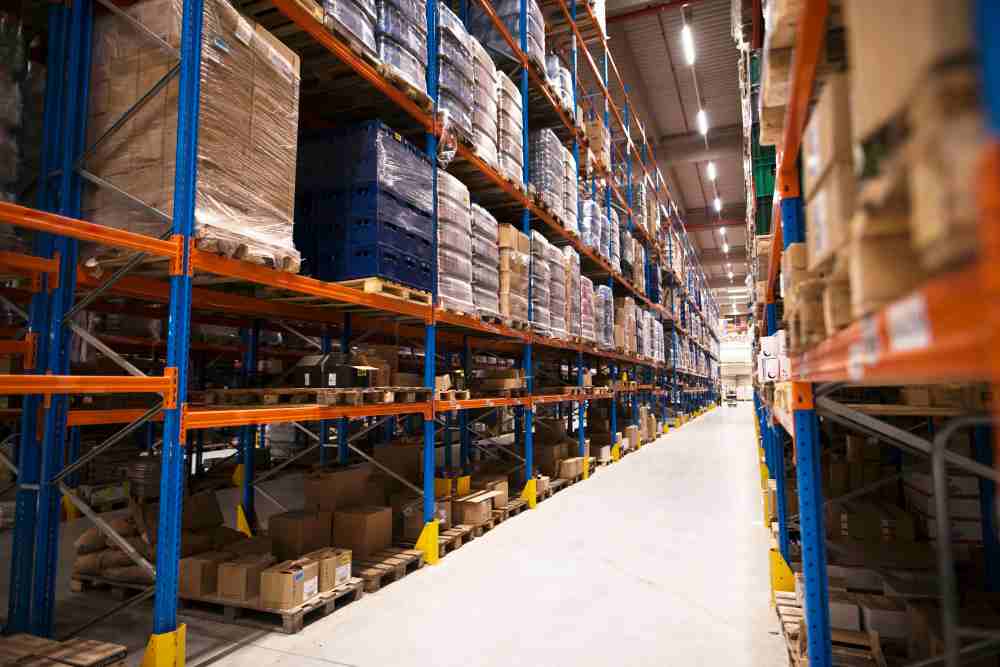Discover different types of rack system warehouses, their costs, and which suits your business needs best. Compare pallet racking, cantilever racking & more!

Introduction
Choosing the right rack system for a warehouse is essential for maximizing storage efficiency, reducing costs, and improving inventory management. Whether you run a small business or a large distribution center, understanding different warehouse rack systems and their costs can help you make an informed decision.
In this article, we’ll explore various types of warehouse racking systems, their pros and cons, and their costs to help you choose the best storage solution for your needs.
1. Selective Pallet Racking
What is Selective Pallet Racking?
Selective pallet racking is one of the most common and affordable warehouse storage systems. It consists of upright frames and horizontal beams that hold pallets. This system allows direct access to each pallet, making it ideal for warehouses with a variety of products.
Pros:
Cost-effective
Easy access to every pallet
Compatible with different types of forklifts
Cons:
Requires more aisle space
Lower storage density compared to other systems
Cost of Selective Pallet Racking
- Price per pallet position: $50 – $200
- Total cost for a medium-sized warehouse: $10,000 – $100,000
2. Drive-In & Drive-Through Racking
What is Drive-In & Drive-Through Racking?
These high-density storage systems allow forklifts to enter the racking lanes. Drive-in racking has only one entry and exit, while drive-through racking has entry points on both sides, allowing for better inventory rotation.
Pros:
Maximizes space utilization
Suitable for high-volume storage
Ideal for last-in, first-out (LIFO) and first-in, first-out (FIFO) methods
Cons:
Limited accessibility
Higher risk of damage to racks from forklifts
Cost of Drive-In & Drive-Through Racking
- Price per pallet position: $150 – $400
- Total cost for a medium-sized warehouse: $50,000 – $250,000
3. Cantilever Racking
What is Cantilever Racking?
Cantilever racking is designed for storing long and bulky items like pipes, timber, and steel. It features horizontal arms extending from vertical columns, allowing easy access to oversized products.
Pros:
Ideal for long and irregularly shaped items
Easy to load and unload
Adjustable arms for different storage needs
Cons:
Not suitable for small items or palletized goods
Requires specialized forklifts for handling
Cost of Cantilever Racking
- Price per storage arm: $50 – $200
- Total cost for a medium-sized warehouse: $20,000 – $150,000
4. Push-Back Racking
What is Push-Back Racking?
Push-back racking is a high-density storage system where pallets are placed on wheeled carts that move along inclined rails. When a new pallet is loaded, it pushes the previous one back.
Pros:
High-density storage with easy access
Ideal for LIFO inventory management
Maximizes warehouse space
Cons:
Not suitable for FIFO inventory systems
More expensive than selective racking
Cost of Push-Back Racking
- Price per pallet position: $200 – $500
- Total cost for a medium-sized warehouse: $50,000 – $300,000
5. Mezzanine Racking System
What is a Mezzanine Racking System?
A mezzanine racking system is a raised platform installed in a warehouse to create additional storage space without expanding the building’s footprint.
Pros:
Utilizes vertical space efficiently
Can be customized for different storage needs
Supports offices, conveyor systems, or additional shelving
Cons:
High installation costs
Requires strong structural support
Cost of Mezzanine Racking System
- Price per square foot: $15 – $50
- Total cost for a medium-sized warehouse: $100,000 – $500,000
Conclusion
Selecting the right warehouse racking system depends on your storage requirements, budget, and inventory management strategy. While selective pallet racking is the most cost-effective option, drive-in racking and push-back racking offer high-density storage. Cantilever racking is ideal for long materials, while mezzanine systems maximize vertical space.
Carefully evaluate your storage needs before investing in a rack system to ensure optimal warehouse efficiency and cost-effectiveness.
Frequently Asked Questions (FAQs)
1. What is the most cost-effective warehouse racking system?
Selective pallet racking is the most cost-effective option, as it provides easy access to pallets and is relatively inexpensive compared to high-density storage systems.
2. How much does a warehouse racking system cost?
The cost depends on the type of system, storage capacity, and installation requirements. Prices range from $50 per pallet position to over $500,000 for large mezzanine systems.
3. Which racking system is best for high-density storage?
Drive-in racking, push-back racking, and pallet flow racking are best for high-density storage, as they maximize space utilization.
4. What factors affect the cost of warehouse racking?
Key factors include rack type, materials, warehouse size, weight capacity, and installation costs.
5. How long does a warehouse racking system last?
With proper maintenance, a warehouse racking system can last 10 to 20 years, depending on material quality and usage.
